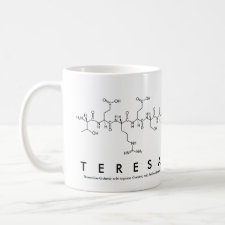
Authors: Sobiech M, Zolek T, Lulinski P, Maciejewska D
Article Title: Separation of octopamine racemate on (R,S)-2-amino-1-phenylethanol imprinted polymer - Experimental and computational studies.
Publication date: 2016
Journal: Talanta
Volume: 146
Page numbers: 556-567.
DOI: 10.1016/j.talanta.2015.05.074
Alternative URL: http://www.sciencedirect.com/science/article/pii/S0039914015300308
Abstract: Ten molecularly imprinted polymers coded as MIP1-MIP10 were prepared by the radical bulk polymerization using (R,S)-(±)-2-amino-1-phenylethanol as the structural analog of the target analyte (R,S)-octopamine. The functional monomers, 4-vinylbenzoic acid (1), methacrylic acid (2), acrylic acid (3), trifluoromethacrylic acid (4), itaconic acid (5), acrylamide (6), isopropenylbenzene (7), 2-hydroxyethyl methacrylate (8), 2-(diethylamino)ethyl methacrylate (9), allylamine (10) were polymerized consecutively with the ethylene glycol dimethacrylate cross-linker in methanol as the porogen. On the basis of the binding capacity of (R,S)-octopamine MIP1 with affinity factor equal to 6.37 was selected for further analysis. The affinity of polymer matrix MIP1 was tested by the non-competitive binding experiments of eight structurally related analytes. Finally, molecularly imprinted solid phase extraction (MISPE) of (R,S)-octopamine from spiked human serum albumin was carried out in order to verify the applicability of novel sorbent. The molecular modeling was employed to rationalize the stereodifferentiation of the analytes by the stereospecific sites formed in the polymer matrix
Template and target information: (R,S)-(±)-2-amino-1-phenylethanol, analogue template, (R,S)-octopamine, octopamine
Author keywords: 2-Amino-1-phenylethanol, Molecularly imprinted polymers, molecularly imprinted solid phase extraction, molecular modeling, Octopamine



Join the Society for Molecular Imprinting

New items RSS feed
Sign-up for e-mail updates:
Choose between receiving an occasional newsletter or more frequent e-mail alerts.
Click here to go to the sign-up page.
Is your name elemental or peptidic? Enter your name and find out by clicking either of the buttons below!
Other products you may like:
 MIPdatabase
MIPdatabase









